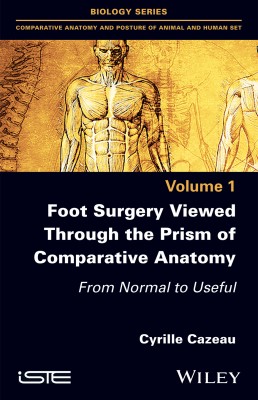
This book presents the different models of terrestrial bipedalism, from the most distant – that of the dinosaurs – to the closest – that of the great apes.
Comparative biomechanical analysis allows us to identify the functional characteristics of human bipedalism. This approach is of direct practical value by proposing specific acts during foot surgery, such as bunion removal, capable of restoring specific functionality. This leads to precedence being given to surgeries that favor useful healing over esthetic healing, even if it is to the detriment of the original, so-called “normal” anatomy, which shows us the evolution of our species.
It is in this context that Foot Surgery Viewed Through the Prism of Comparative Anatomy studies new techniques within percutaneous foot surgery. These techniques allow rapid healing by walking using post-operative support immediately after an operation. This notion of bone and tissue growth through the use of gravitational forces is then extended and applied, more broadly, to all living things, be they animal or vegetable.
1. Comparison: The Key to Understanding Human Specificity.
2. The Aim of Surgery: Restore Function.
3. Rapid Healing Through Immediate Use of the Operated Foot: A Purpose.
Cyrille Cazeau is an orthopedic surgeon specializing in foot surgery at the Victor Hugo Clinic and the Hôtel-Dieu Hospital in Paris, France. He also holds a biomechanics diploma from the ENSAM engineering school and works in paleoanthropology.